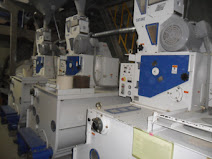Explore the fascinating history and diverse world of Korean dumplings (mandu), from their origins in ancient China to popular varieties like steamed, pan-fried, kimchi, and meat. Discover regional favorites and legal classifications of this beloved dish."
The charm of steaming hot and eating golden brown, the story of dumplings
1. Origin of dumplings
The Chinese characters for dumplings are '蠻頭(mandu)', and there are various theories about the origin of dumplings. It is said that it means the head of a Nanman (a southern Chinese people).
There is a theory that it originated from the Three Kingdoms period when Zhuge Liang, who conquered the Nanman, made a human head and held a ritual to comfort the dead soldiers.
The well-known story 'Chiljong Chilgeum (七縱七擒)' means that Zhuge Liang captured the Nanman king Meng Huo seven times and released him seven times, making him truly submit from the bottom of his heart.
2 Types of Dumplings
Depending on the filling, dumplings are divided into meat dumplings, kimchi dumplings, vegetable dumplings, etc., and depending on the shape, there are crescent-shaped dumplings, large king dumplings, thin and wide flat dumplings, rolled round dumplings, and square-shaped pyeonsu.
Depending on the cooking method, there are steamed dumplings, fried dumplings, boiled dumplings, and dumpling soup.
There are Chinese baozi, Japanese gyoza, and Hong Kong dim sum (點心) as types of dumplings.
The flat dumplings that we tried in Dongseong-ro, Jung-gu, Daegu have now spread nationwide and are now a food that can be eaten anywhere.
3 History of Dumplings in Korea
The dumplings that we enjoy eating today are known to have a short history. This dish, made by cutting noodles and various vegetables into small pieces, wrapping them in flour skin, and steaming or grilling them, has now become a popular menu for many people.
When ordering jajangmyeon at a Chinese restaurant, kind owners sometimes send fried dumplings as a service, but this is an independent product that will cause bleeding, and it can be problematic if you ask too much.
4 Comparison of Songpyeon and Mandu
In songpyeon and our own rice cakes, there are rice cakes with fillings, but mandu is made with various fillings such as vegetables, and it can be said that it is different from making a single ingredient.
Mandu contains noodles, and it may be an exaggerated analogy to say that a mandu without noodles is like a steamed bun without red bean paste, but it emphasizes the importance of noodles as an ingredient.
5 Laws related to mandu and mandu skin
Mandu skin and finished mandu products are different types of food, but the Food Sanitation Act stipulates that mandu is classified as an instant food.
(1) Dumplings are made by molding a mixture of meat, vegetables, etc. into dumpling skin.
(2) Dumpling skin is made by kneading and molding grain flour or starch as the main ingredient, and is manufactured so that dumplings can be made by filling them with meat.
Just as tteokguk tteok is used in ramen, which is the main dish, dumpling soup also has tteokguk tteok as a side ingredient. When eating dumpling soup, if the filling bursts, the hot broth can burn your mouth.
6 Future Outlook
Just as frozen kimbap has become popular in the United States and other parts of the world, dumplings are mostly sold frozen for hygiene reasons, so it seems that they will soon become popular overseas as well.
There was a garbage dumpling incident in the past, but now that they are being made hygienically in specialized factories, there is no need to worry too much.











































